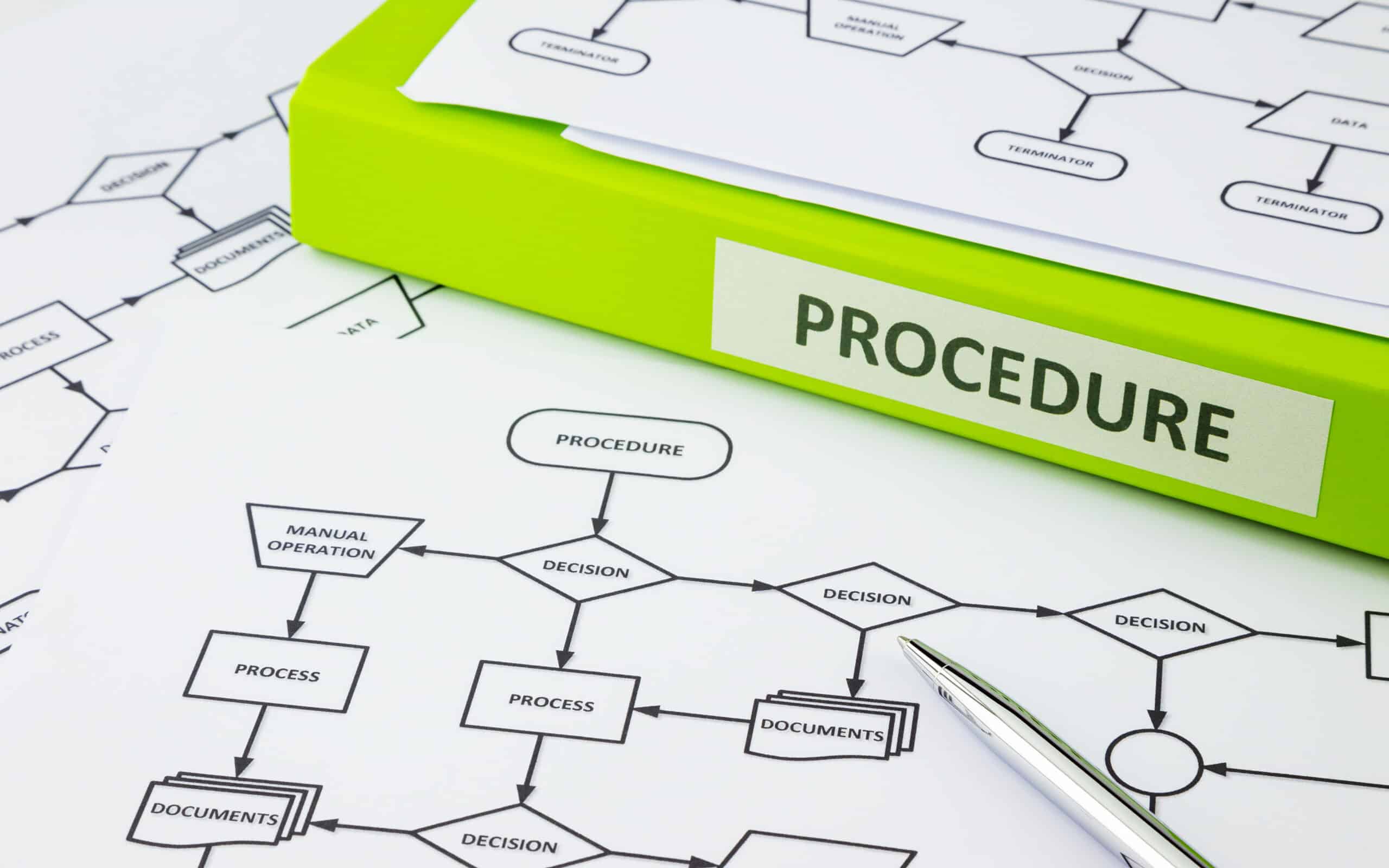
There are all kinds of procedures for the many things that people do every single day. Every family household has procedures for basic tasks like putting dishes away, assembling for dinner or getting into the car. Likewise, every place of business has procedures for the essential activities they do on a regular basis.
Overview: What are procedures?
Procedures are the established methods for completing a particular task. They are often presented in a practical, step-by-step format to serve as a reference, guide and framework for personnel.
In the context of process management, “procedures” can take many different forms and have various applications. They may be formal or informal as well as written or spoken. There may be optional or alternatives for some steps. How companies develop, implement and improve their procedures is a central focus of Six Sigma strategy.
3 benefits of procedures
Procedures aren’t just beneficial, they are the essential backbone of core processes that allow companies to function.
1. Common reference
The main benefit of good procedures is having a common reference and framework across the board. Established procedures ensure consistency despite variations in personnel, time of day or rate of production, among other variables.
2. Better onboarding
Companies that have established procedures can produce effective and detailed training material or programs. This allows them to educate personnel and prepare them for new positions much faster.
3. Definition and measurement
Procedures outline the different steps and tasks required to complete each stage of the production process. This gives businesses the opportunity to define the inputs and outputs into all of these different processes so they can start measuring and storing useful data.
Why are procedures important to understand?
From a business management standpoint, everything depends on how you handle procedures in your organization. That’s why you need to understand as much as you can about the subject.
Foundation for improvement
The various benefits of established procedures work together to form a foundation for continuous improvement via a DMAIC cycle. Procedures are the vehicle of the improvement process, so they only work as long as they are properly implemented and maintained.
Scrap or repair?
When businesses decide to renovate their processes, they face the difficult decision of scrapping existing procedures or simply fixing them up. Sometimes a third-party assessment is the best way to assess the viability of existing methods and protocol.
Blind-spot awareness
Even the best procedures have blind-spots, so expect yours to have some big ones at first. You can’t always cover every possibility or detail, but managers still need to be aware of the blind-spots in their procedures and incorporate this knowledge into their crisis management planning.
An industry example of procedures
An automotive service shop provides excellent services, but receives some complaints from customers due to conflicting information received from employees. After investigating current processes, company leadership discovers that there are lots of inconsistencies and confusions regarding the current status of ongoing work in the shop.
To address this, the company creates specific procedures regarding the status of vehicles currently being worked on. This includes defining discrete stages and ensuring this status is updated digitally on the company’s CRM software so that customer service reps can give accurate information to customers.
3 best practices when thinking about procedures
There are numerous best practices that can improve your ability to develop and implement operational procedures.
1. Use more detail when in doubt
Leave nothing important to chance or the imagination. If there’s any chance of confusion or misinterpretation, then add as many details to the procedure as needed to establish clarity. You can always pare it down later.
2. Learn from peers
It’s certainly possible to develop procedures from the ground up, but it’s rarely the most efficient way. It’s usually a good idea to look at the procedures used by peers and competitors for comparable processes as a frame of reference when designing your own.
3. Keep on improving
Many companies stay strong through the first one or two improvement cycles, but fail to keep the ball rolling. The nature of ongoing improvement necessitates consistency, endurance and vision.
Frequently Asked Questions (FAQ) about procedures
How do you create a procedure?
Procedures are a step-by-step guide towards a final goal. That final goal, which usually involves serving a customer in some way, should be the starting point of creating procedures for any process.
How do you store or share procedures?
Informal procedures are often shared verbally. Any kind of basic teaching, like a parent teaching their child how to use a device, is simply a sharing of procedures. More formal procedures in a professional environment should be stored officially in writing and shared in every format possible.
When do you need to use procedures?
Procedures are necessary when there is a notable risk of inconsistent operations. Every business needs to assess and prioritize potential inconsistencies so they know where to draw the line. The need for formal procedures often grows as the company expands.
Make procedural progress
Process managers should care passionately about procedures, because they are the vehicle of change and improvement. However, there is a fine and essential balance to achieve. Learning how to develop and realize procedures in a working environment is a fundamental skill for successful leaders in business.